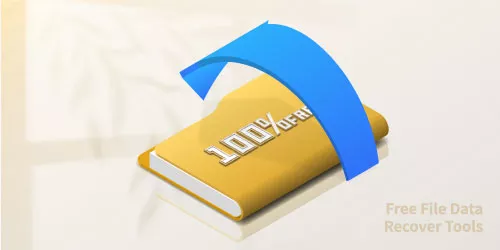Cannot Recover Deleted Files from SSD Drive? Causes & Solutions
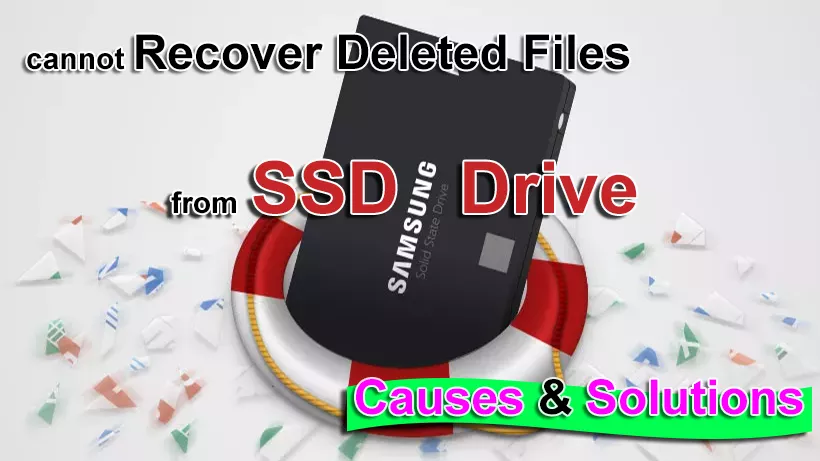
Did you accidentally delete the files or data from your SSD (solid-state drive) drive inside your computer and then find that the files you just deleted could not be restored by the system or any other data recovery software?
Actually, the data recovery tools you used can retrieve most of the data you deleted shortly before from the HDD (hard disk drive) but it won't work properly for the SSD drive.
I also need to recover the deleted files from the SSD drive recently, and I tried several data recovery software but none of them worked. They were Disk Drill, STELLAR DATA RECOVERY PROFESSIONAL, Wondershare Data Recovery (Recoverit), iSunshare BitGenius, and System Mechanic.
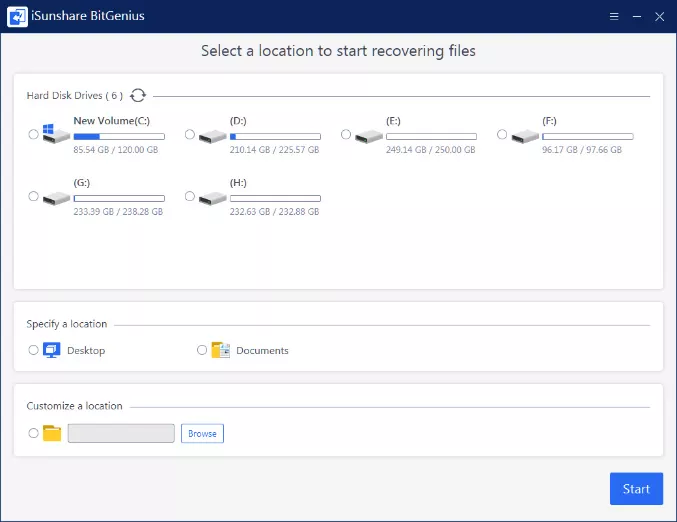
Why? This post, Cannot Recover Deleted Files from SSD Drive? Causes & Solutions, is going to tell you the exact reasons and give you some helpful solutions that can make your future files or data on the SSD drive recoverable for data recovery software.
I thought there was still a chance to recover the deleted data from an SSD drive, so I tried a lot to use some advanced tools provided by the SSD controller’s manufacturer rather than usual data recovery software on the market.
Want to know the result? Just keep reading and you will get it.
CAUSES
1. The differences between SSD & HDD.
An SSD is a solid-state storage device that uses integrated circuit assemblies to persistently store data typically using flash memory, while an HDD is an electromechanical data storage device that stores and retrieves digital data using magnetic storage and one or more rigid rapidly rotating platters coated with magnetic material.
This leads to the main difference, the storage locations on SSD with flash memory cannot be overwritten or modified until they are erased.
2. The TRIM is enabled.
Therefore, to make the best performance and the longest service life of an SSD, the trim command (TRIM) is introduced and set to enabled by default which allows an OS (operating system) to inform an SSD which blocks of data are no longer "in use" and can be erased internally.
So when you delete a file in the OS, the relevant data on the HDD isn’t really removed, while the data on the SSD will be actually erased if deleted in the OS.
This is the reason why data recovery software can work well on the HDD but not on the SSD, and why you cannot recover the deleted files or data from the SSD drive.
How to check if TRIM is enabled? Windows 10 & 7
1. Check it with SSD-Z, which is a tiny information tool for SSD and other disk devices.
Download: SSD-Z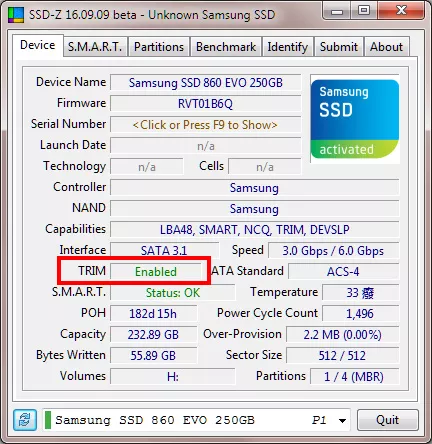
2. Check it with "fsutil behavior query disabledeletenotify".
Step 1: Press Windows Key + R, and the "Run" box will pop up.
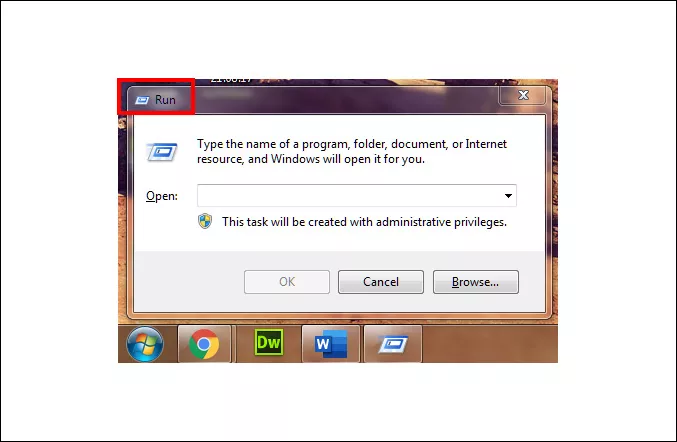
Step 2: Type cmd and pressCtrl + Shift + Enterto open Command Prompt as administrator.
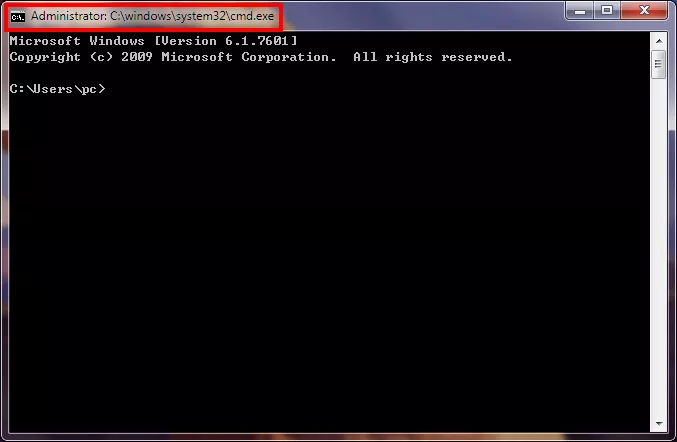
Step 3: Copyfsutil behavior query disabledeletenotifyand paste it on the Command Prompt window by right-click, and then press Enter.
If “DisableDeleteNotify = 0” is shown, the Trim is enabled.
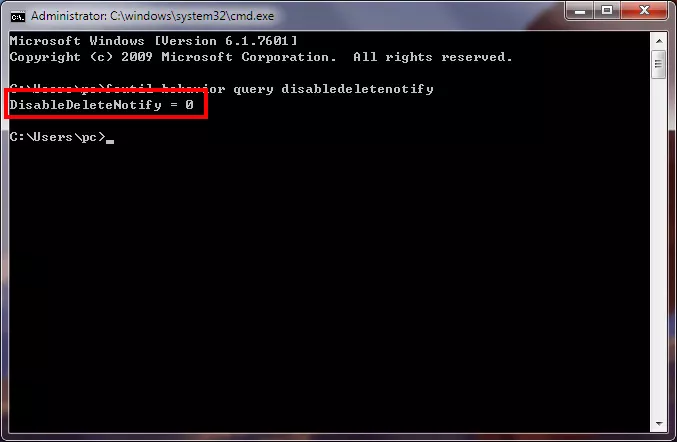
If “DisableDeleteNotify = 1” is shown, the Trim is disabled.
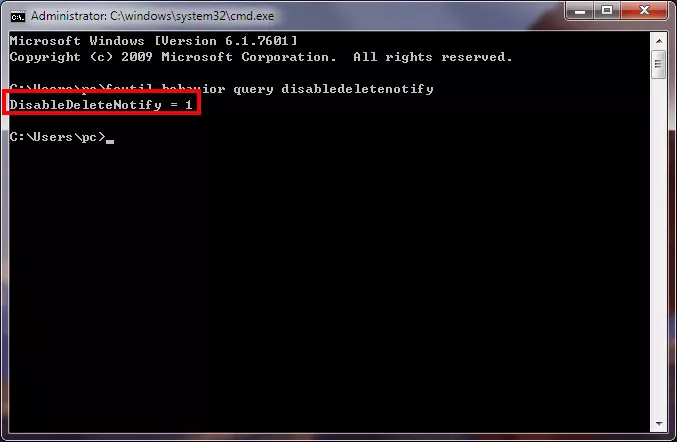
SOLUTIONS
Although you cannot recover the previously lost data or files, you can take the following steps to avoid further data loss in the future.
1. Store the important files into the HDD.
Some of the new computers have an SSD plus HDD combination. Honestly, the HDD is slower in file reading and writing, but it is recoverable after you delete the wrong files and empty Recycle Bin, which is more and more important than its performance for your important files.
So if your own PC has another HDD drive installed inside, you are strongly recommended to keep your valuable documents in the HDD rather than SSD drive in case of an accidental data loss.
2. Disable TRIM.
Almost every computer with Windows 7 and above has its trim command enabled by default.
If your SSD drive is the only drive on your computer, you may need to manually disable the trim command so that you can restore the deleted files from SSD on a certain day.
Please note, this will slow down the writing speed of your SSD drive, which is going to degrade your computer's performance.
How to disable TRIM?
Step 1: Press Windows Key + R, and the "Run" box will pop up.
Step 2: Type cmd and pressCtrl + Shift + Enterto open Command Prompt as administrator.
Step 3: Type fsutil behavior set disabledeletenotify 1 and press Enter. You will see “DisableDeleteNotify = 1” on the Command Prompt.
Congratulations! This means the Trim of your computer is now disabled.
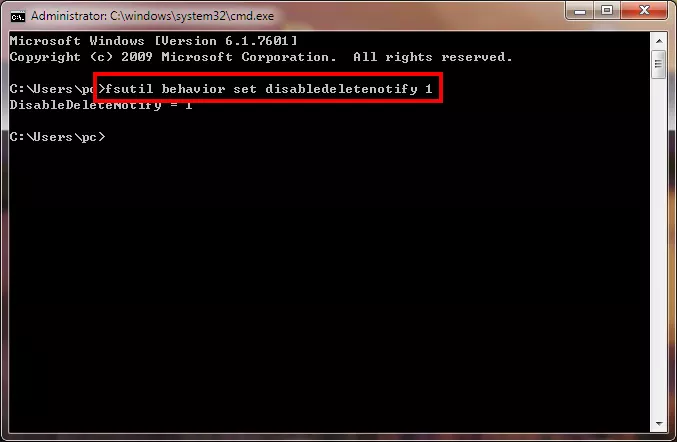
Tips: If you want to re-enable TRIM in the future, just open Command Prompt again, type fsutil behavior set disabledeletenotify 0 and then press enter.
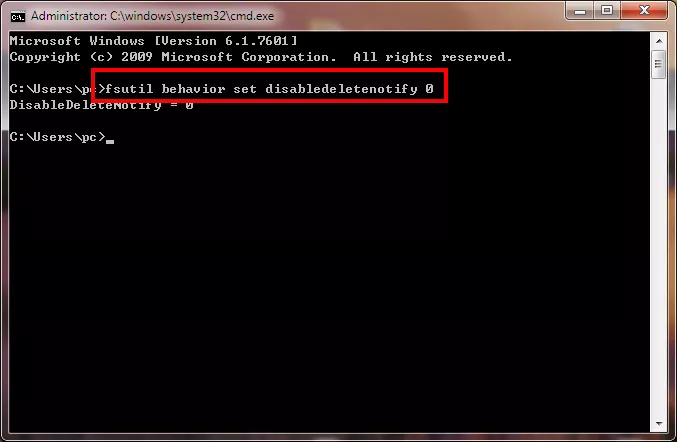
3. Always back up your important data.
Way 1: Back up with Windows OS.
For Windows 10 users:
Please select Start > Settings > Update & Security > Backup, and then click Add a drive.
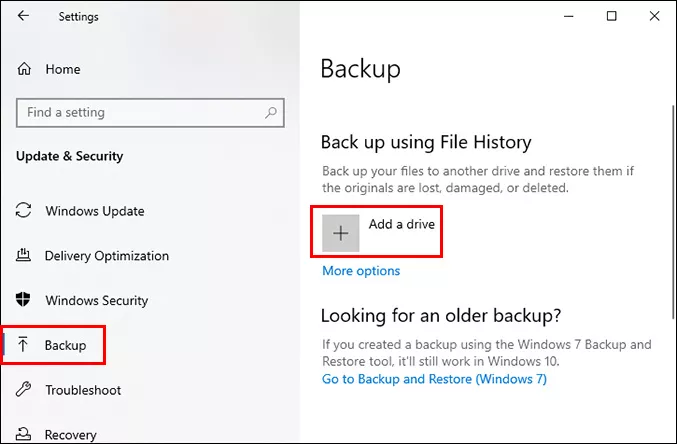
Once you need to restore your files, you can type restore files in the search box in the lower-left corner of the screen, and selectRestore your files with File History. After you find what you want, clickRestoreto save it to where it stayed before.
For more details, please visit: Backup and Restore in Windows 10 from Microsoft Support.
For Windows 7 users:
Please select Start, type backup in the Start Search box, and select Backup and Restore in the Programs list. Click Set up backup on the right of the window.
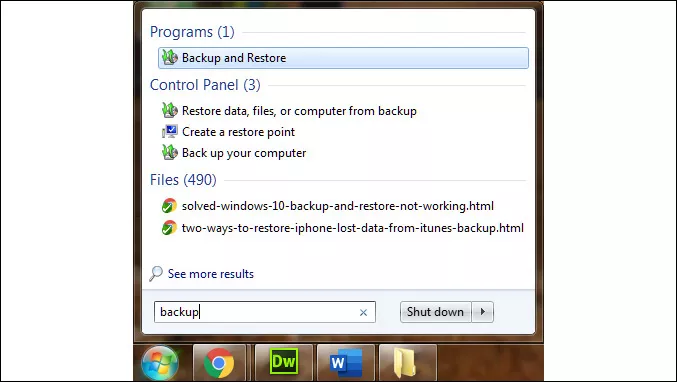
Then, you can just follow the wizard to finish the rest.
For more details, please visit: How to back up or transfer your data on a Windows-based computer from Microsoft Support, and scroll down to Method 3: Use the Backup and Restore Center.
Way 2: Back up more easily with a third-party tool.
If you don’t have much time and want to do this in an easy way, you can download this useful software, CloneGo, to back up and restore your important data effectively.
Download: CloneGo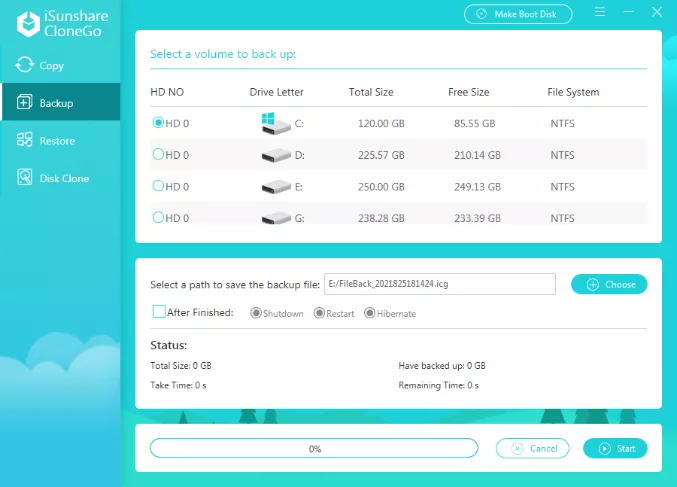
For the details about how to use it, please visit its User Guide: How to Use iSunshare CloneGo, and you will get it.
MORE
I found that there is a powerful set of tools named EzTools which comes in a series of versions for different SSD controllers. It was said that it could be used to recover deleted data even in an SSD drive, so I was so excited and couldn't wait to download one of the versions.
After that, I found it could be used only on the SSD drive with controller provided by Silicon Motion Technology Corporation (SIMO), so I went to find out the controller brand of the SSD in my computer using SSD-Z.
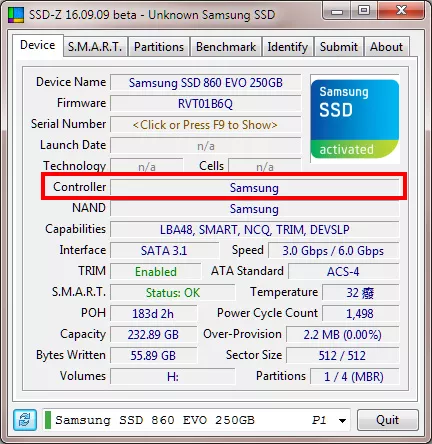
The result came out as a Samsung controller, so I tested with SSD-Z on other computers. Some of them were Toshiba SSDs with Phison controllers, and others were Samsung SSDs with Samsung controllers.
Therefore, I had no choice but still tried running the EzTools for my Samsung SSD.
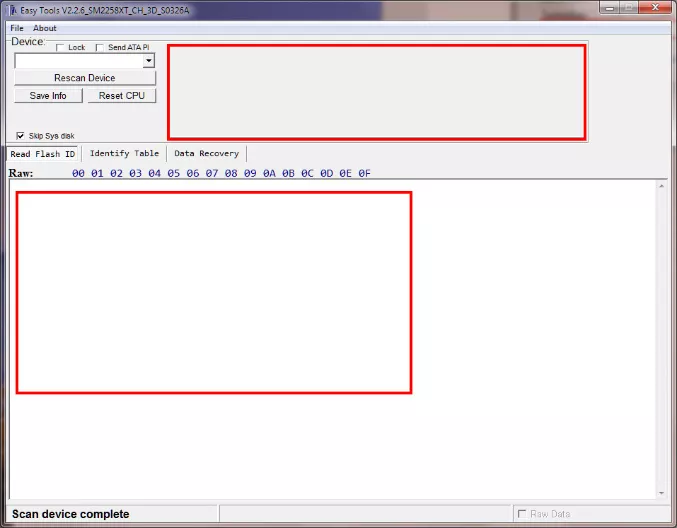
Obviously, it didn't work properly and showed nothing.
So far, I have failed to recover deleted files from the trim-enabled SSD, but I won't give up. What I am doing now is to find out if there are other methods to finish it.
Stay tuned! I will let you know once I succeed.
Watch the Video Tutorial
Why can't you recover deleted files from an SSD? Watch the video now!


![[Examples] Windows File Recovery (CMD) - Recover Formatted Data](../img/software/examples-windows-file-recovery-cmd-recover-formatted-data/examples-windows-file-recovery-cmd-recover-formatted-data-m.webp)
![[Examples] How to Recover Permanently Deleted Files Using Command Prompt in Windows 10](../img/software/examples-how-to-recover-permanently-deleted-files-using-command-prompt-in-windows-10/examples-how-to-recover-permanently-deleted-files-using-command-prompt-in-windows-10-m.webp)
![[Fixed] How to Recover Deleted Excel File Not in Recycle Bin](../img/office/fixed-how-to-recover-deleted-excel-file-not-in-recycle-bin/fixed-how-to-recover-deleted-excel-file-not-in-recycle-bin-m.webp)
